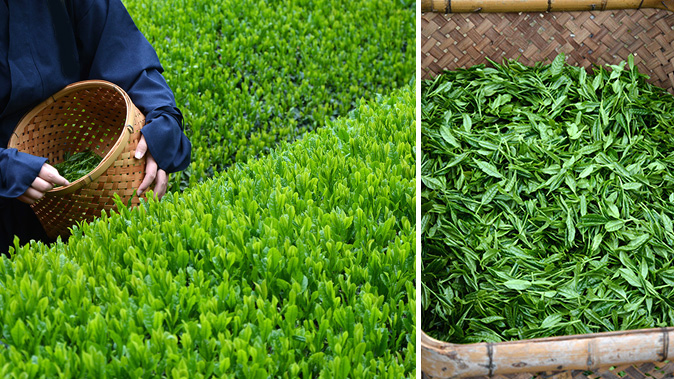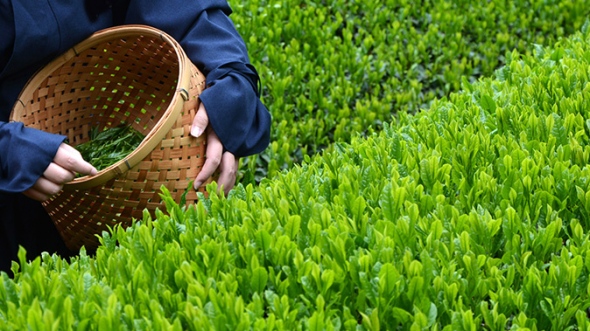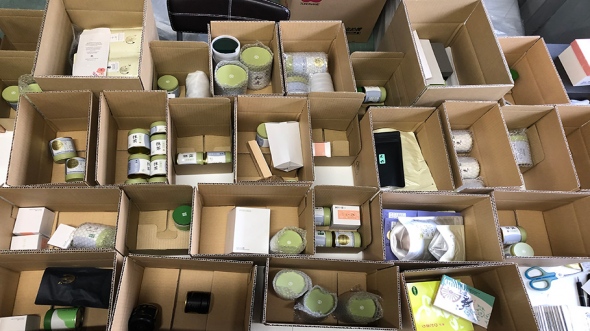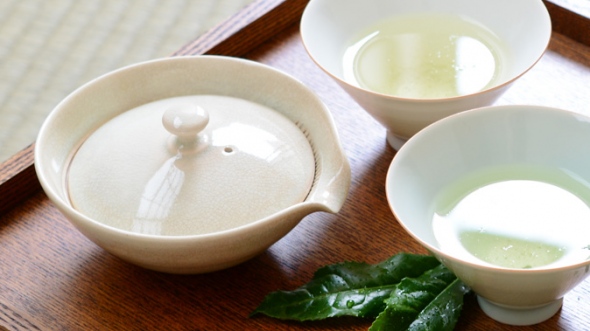There is a lot of confusion around Shincha and Japanese New Tea (called Ichibancha). Japan has its own unique way of processing tea, distinct from other tea producing countries, making the tea vocabulary also a little bit different. So what is Shincha exactly, and how is it different from New Tea? Lets clear up the confusion here a little bit.

In Spring after the long dormant winter, Japanese nature comes back to life, and as the season gets warmer, tea leaves get ready for harvest. The newly harvested leaves are processed and turned into several different types of tea. Shincha is the very first tea to appear on the market, and even though its name literally means "new tea" in Japanese, Shincha and New Tea are two entirely different genres.
Shincha
April is the season of dense morning mists, that make the air heavy with humidity. The warmer and brighter April Sun, with the mist hanging above tea bushes, fill the dormant tea buds with energy, and by the end of the month the first, fresh tea leaves get ready for harvesting, and the year's first tea picking season starts. The tea that comes from this first harvest is what we call Shincha. Shincha is blended from the softest, most tender tea leaves, that are processed quickly right after the harvest. They are steamed for a shorter time at a lower temperature, so they stay moist and fresh, with the aroma of a rain-soaked, lush green forest.
Shincha has become exceptionally popular these days, many tea lovers are looking forward to the Shincha Season the most. There is a huge competition for companies to release their Shincha as soon as possible. This haste together with the distinct processing of the leaves result in a sweet, grassy taste tea, that is only sold for 1-2 months after the harvest. Due to the fast processing, Shincha is higher in vitamins than other blends, but for the same reason it is better to drink it fast, as it looses most of its aroma in about half a year.

New Tea
While Shincha is a seasonal tea blend, New Teas are the same blends year by year. When it comes to New Teas, it is important to recreate the same taste and aroma, that once the tea master (chajin) created. They are also made from the first harvest, but they need to have the same quality and same taste every single year.
Unlike Shincha, processing New Teas takes a longer time. Traditionally these teas would become available from September to Tsubokiri (“Breaking of the seal”) in November, since the tastes blend better by then., These days however, most of them come out much sooner, as there is a lot of pressure on the producers to release their teas as soon as possible.
The highest-grade teas still come out around September, because they are made for Japan's most prestigeous tea competition, the All-Japan Competitive Tea Exhibition, held in September. This competition is a closed event, only participants can attend. The tea producers make their competing teas especially for this event, so they never present them before the competition.
Most Japanese teas are blends, and since it is important to create the same taste each year, it is not rare that the tea master mixes tea from the previous year too into the new blends. This is why most Japanese teas do not have the year of harvest indicated, and most companies do not even make it public to retailers when they start selling the New Tea.
Dates for releasing the New Tea
It's difficult to tell when New Teas become available, since - just like in case of other agricultural products - there are many factors (the sometimes unpredictable weather for instance) that influence the growth of the tea leaves. With the southern areas having warmer weather, tea picking starts the earliest in Kyushu and the latest in higher areas like Asamiya's (Shiga Prefecture) tea fields.
It is possible to slow the growth (by covering the tea fields with appropriate shades), but speeding it is not realistic - no one can rush nature.
The release date always depends on the types of tea. Some kinds become available just a few weeks after the tea picking starts, but some could be released as late as Fall.
Some companies use marks to distinguish New Teas from others, Hokoen for example puts a gold sticker on all its New Tea packages.
The New Tea season in Uji starts with the Ujicha festival, where many significant characters of the Tea World represent themselves, from company leaders to the top tea masters. This festival is the official opening of the tea picking season, and it's a very important event with many fun and cultural events for tea enthusiasts, both amateurs and professionals.

NEW TEA in 2021
In 2021 the Ujicha Festival was not held due to the COVID-19 pandemic, but unlike last year, when tea producers suffered from lack of human resources and rhapsodically changing weather conditions, this year the tea harvest started as usual, and tea release dates follow the usual rhythm.
Sencha: from the end of May through June
Gyokuro : from the end of June till mid-July
Matcha: f rom the end of June through July
Some types, especially the higher grade teas are released much later (September, October), following the traditional timing of blending (e.g. Ohmi Premium Sencha Chaju , Gyokuro Chitose no Homare ).
Please note, that these are only approximate dates, that can slightly change depending on the weather conditions.
Shincha at Sazen Tea
Shincha tea blends, both matcha and sencha, are available at our webstore during the Shincha Season. Every year, after the tea makers introduce their newest Shinchas, we taste them all, and choose and offer you the ones of the best quality, with the most aromatic, richest flavours.





